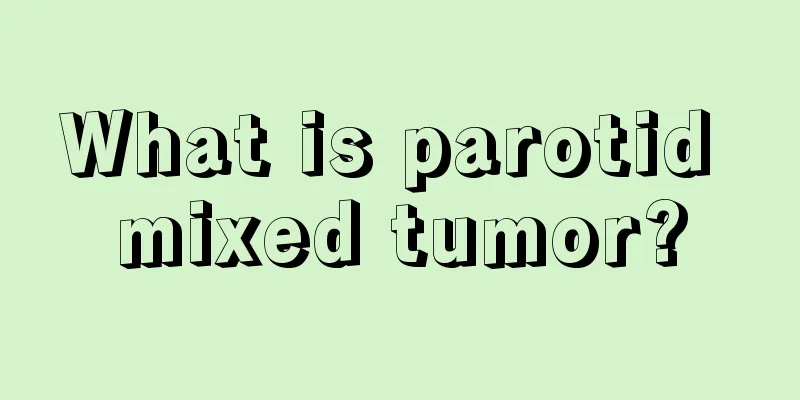Is bile duct cancer serious?

|
Is bile duct cancer serious? This is a question that patients are very concerned about. Biliary duct cancer is a malignant tumor. Cancer is now also a medical problem for the world, and the prognosis of bile duct cancer is relatively poor. Therefore, bile duct cancer is a relatively serious disease. Once the disease is discovered, it needs to be treated in time. Through the following article, you will have a clear understanding of the severity of bile duct cancer and how to treat it. Cholangiocarcinoma is less sensitive to chemotherapy than other gastrointestinal tumors such as colon cancer. The reason is still unclear. It may be due to the drug resistance of cholangiocarcinoma, low drug concentration in the tumor and other factors. Therefore, there is still no truly effective chemotherapy for cholangiocarcinoma. A report used the MTT method to detect the sensitivity of 10 hilar cholangiocarcinoma cells to chemotherapy drugs. The results showed that the sensitivity rates of the eight drugs were: epirubicin (epirubicin) 60%; doxorubicin (adriamycin) 40%; cisplatin 30%; carboplatin 30%; mitomycin 20%; methotrexate 10%; fluorouracil (5-Fu) 0%; cyclophosphamide 0%; but in fact, the clinical application effect of most cases did not reach the above efficiency. In 1997, Lersch reported that the remission rate of single-agent chemotherapy was only 12%, while the remission rate of combined chemotherapy was 23%. ① Therapeutic chemotherapy for advanced cholangiocarcinoma: Commonly used chemotherapy drugs are similar to those for other gastrointestinal cancers, mainly fluorouracil (5-FU), doxorubicin (adriamycin), mitomycin (MMC) and nitrosourea, etc. They can be applied systemically or through arterial catheterization. Since the blood supply of the bile duct comes from the hepatic artery, arterial chemotherapy may have better efficacy than the former. Some studies have indeed shown that chemotherapy may relieve the symptoms caused by cholangiocarcinoma, improve the quality of life of patients, and may also prolong survival. One group reported 49 patients, with fluorouracil (5-FU) as the main chemotherapy drug, and the other group of 41 cases only received general care. 36% of the treated group, while only 10% of the untreated group; patients extended their high-quality life by 4 months. The median survival of the former was 6 months, while the latter was only 2.5 months. ② Adjuvant surgical treatment: Neoadjuvant chemoradiotherapy means that chemotherapy and radiotherapy are first applied to solid tumors, followed by surgery, and then chemotherapy and radiotherapy are used as adjuvants after surgery. The theoretical basis is to perform effective combined chemotherapy before surgery or before radiotherapy to kill a large number of sensitive tumor cells and reduce the vitality of tumor cells. Then surgical resection or radiotherapy is used to destroy the remaining cancer cells, including those that are insensitive to chemotherapy, to achieve the purpose of curing the tumor. Some scholars have used this regimen to treat hilar cholangiocarcinoma. Usually, 5-fluorouracil (5-FU) [300 mg/(m2·d)] is intravenously infused before surgery for 5 days, and then external radiation therapy (1.8 Gy/d, with a total dose of no more than 50 Gy) is performed at the tumor site. As a result, the surgical resection rate was increased, the residual rate of microscopic cancer cells at the bile duct resection margin was reduced, and local recurrence was reduced. However, there is no conclusion on whether it can improve the survival rate. ③ Combined use with radiotherapy: The use of some recognized radiosensitizers such as 5-fluorouracil (5-FU) can improve the efficacy of radiotherapy. The in vitro and animal experimental studies on the killing effect of molecular chemotherapy and radiosensitization on bile duct cancer cells have achieved satisfactory experimental results, providing a new approach for the comprehensive treatment of bile duct cancer. Minsky used 5-fluorouracil (5-FU) and mitomycin in synergistic radiotherapy: the irradiation dose of the tumor bed and lymph nodes was 50 Gy, and most patients also received 15 Gy of intracavitary radiotherapy, which all patients were able to tolerate, and the 3-year survival rate reached 50%; there was also the use of external radiotherapy and 5-fluorouracil (5-FU) chemotherapy after surgery to reduce the radiotherapy dose. After carefully reading the editor's introduction, people have a deep understanding of bile duct diseases and know how to treat such diseases after they occur. I hope that understanding the treatment of bile duct cancer can help people take correct treatment measures and avoid missing the best time for treatment and causing too much harm. |
<<: Pathological classification of cholangiocarcinoma
>>: What is the cause of osteosarcoma
Recommend
It turns out there are 5 causes of chronic respiratory failure
Chronic respiratory failure is a very common resp...
What are the nursing analyses for hamartoma
In fact, hamartoma is not a difficult disease to ...
Introduction to teratoma
Teratomas originate from potentially multifunctio...
Who is susceptible to solar dermatitis?
Solar dermatitis is a common disease at present. ...
How to choose oranges
How to choose oranges? This shouldn't be diff...
Experts explain surgical treatment methods for prostate cancer
Prostate cancer is a disease that seriously threa...
What are the examination items for early lung cancer? Five examination items for early lung cancer
No matter what the disease is, the earlier the di...
Can intervention be used to treat multiple liver cancers?
Multiple liver cancers can be treated with interv...
What to do with heel gout
Heel gout is actually a phenomenon of joint pain,...
How to treat aneurysmal subarachnoid hemorrhage
The clinical treatment of aneurysmal subarachnoid...
How to use sanitary napkins
Many girls do not have any knowledge about sanita...
If your teeth hurt or are loose, eat more of these
If you want to have white and strong teeth, in ad...
Suddenly coughing up a lot of bright red blood
Bleeding from any part of the human body is an ab...
Will breast cancer in situ recur?
Will breast cancer recur? Experts say that breast...
It is cleanest to wash meat with rice water
Rice water is the cleanest way to wash meat Befor...









